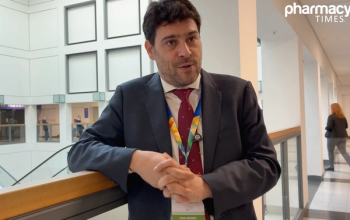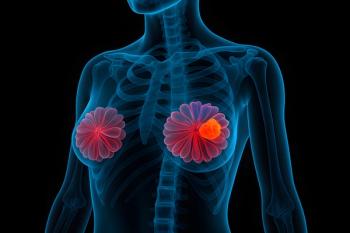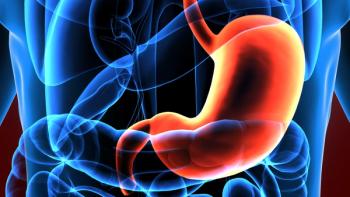
Monoclonal Antibody Combination Found Safe, But Shows Limited Efficacy Treating COVID-19 Symptoms
Study evaluates the effect of long-acting monoclonal antibodies tixagevimab and cilgavimab treating COVID-19 symptoms and viral shedding.
Treatment with the long-acting monoclonal antibodies (mAbs) tixagevimab and cilgavimab (Evusheld; AstraZeneca) was found to be safe but did not have a significant impact treating the symptoms of COVID-19, according to a study published in JAMA Network Open.
“Results of these 2 randomized clinical trials indicate that tixagevimab-cilgavimab administered intramuscularly to the thigh was safe but neither intramuscular nor intravenous treatment had significant effects on measured symptom outcomes,” the study authors wrote.
The investigators conducted a pair of phase 2 randomized clinical trials to evaluate whether administering the combination of tixagevimab and cilgavimab could improve COVID-19 symptoms and viral shedding. Patients enrolled in the trial were 18 years of age or older, were not hospitalized but had a positive COVID-19 test, and presented symptoms between February 1-May 31, 2021.
The first study randomized 229 participants to receive either 600 mg of tixagevimab and cilgavimab, at a dose of 300 mg each, administered intramuscularly (IM), or placebo. Half of the enrollees were men, most were white, and the median age was 39 years.
Following administration of either the drug or placebo, patients completed a daily symptom diary through day 28 and gathered daily self-nasal swabs through day 14. Patients then returned to the clinic for assessments on days 3, 7, 14, and 28 for staff-collected nasopharyngeal swabs.
The researchers found that time to symptom improvement in the IM study did not show a significant difference between the intervention and placebo arms at days 8 and 10, respectively. There was also not a significant difference in median time to return to health at 14 and 13 days, respectively. No deaths were reported in either patient cohort; however, 4 participants were hospitalized in the intervention group and 7 patients were hospitalized in the placebo group during the first 28 days.
The second study randomized 119 participants to receive either 300 mg of tixagevimab and cilgavimab at a dose of 150 mg each administered intravenously (IV) or a placebo. Participants had a median age of 44 years, approximately 60% were women, and most reported white ethnicity. Participants in the second group had the same follow up with daily self-swabs, symptom diary, and clinical visits as patients in the IM study.
Similarly, the time to symptom improvement was comparable between cohorts, with the IV group needing 11 days and the placebo group needing 10 days, according to the investigators. Median time to return to heath required 12 and 15 days, respectively, similar to the IM study. There were no deaths or hospitalizations reported in the IV study during the first 28 days.
“An antiviral effect of tixagevimab-cilgavimab was demonstrated in the primary virologic analysis for intramuscular and other analyses in the truncated intravenous study,” the study authors wrote. “There were numerically fewer hospitalizations with receipt of tixagevimab-cilgavimab.”
The investigators found that a greater proportion of IM patients administered the intervention had COVID-19 RNA below the lower limit of quantification (LLOQ) at day 7 versus placebo, but not at days 3 or 14. No differences were found in the proportion below LLOQ in the IV intervention versus the placebo group at any of the evaluated time points.
Further, 13 patients in the IM study and 1 patient in the IV study were administered at least 1 COVID-19 dose prior to enrollment.
“Therapeutic options for COVID-19 remain limited. At present, there are no mAbs available with activity against the circulating SARS-CoV-2 variants,” the study authors wrote. “Our findings support IM thigh administration of mAbs, a route that should be considered in development of mAbs for SARS-CoV-2 infection.”
Reference
Bender Ignacio RA, Chew KW, Moser C, et al. Safety and Efficacy of Combined Tixagevimab and Cilgavimab Administered Intramuscularly or Intravenously in Nonhospitalized Patients With COVID-19: 2 Randomized Clinical Trials. JAMA Netw Open. 2023;6(4):e2310039. doi:10.1001/jamanetworkopen.2023.10039.
Newsletter
Stay informed on drug updates, treatment guidelines, and pharmacy practice trends—subscribe to Pharmacy Times for weekly clinical insights.






















































































































































































































